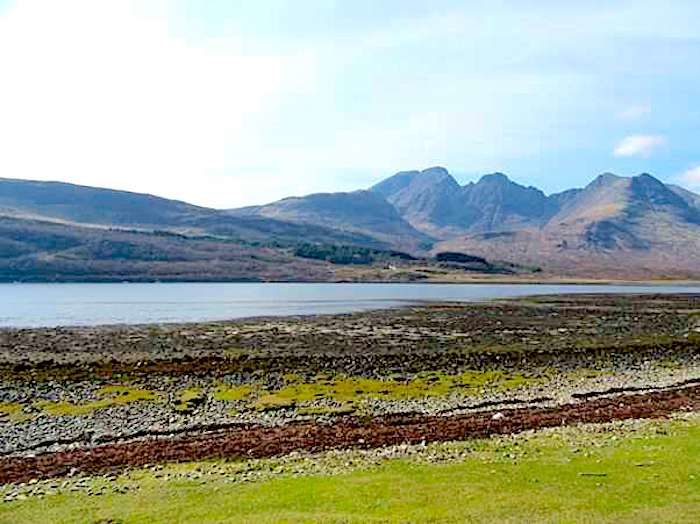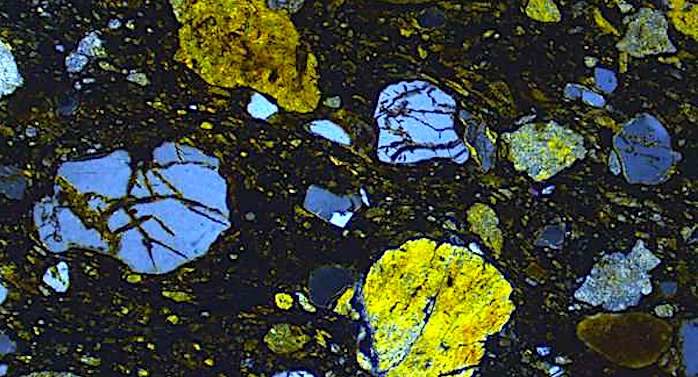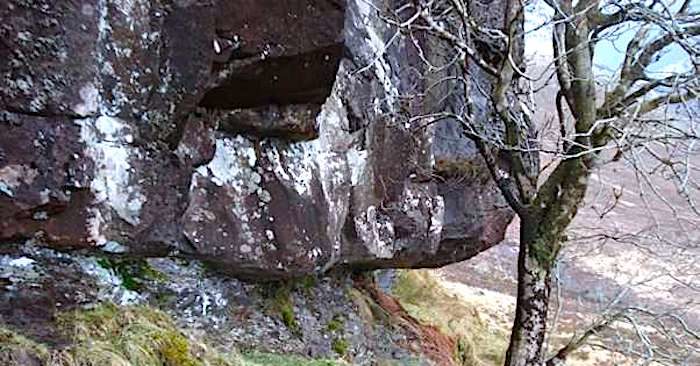
© Simon DrakeSite 1 is above the tree line in the mid-ground far side of Loch Slapin, Isle of Skye, Scotland
Geologists exploring volcanic rocks on Scotland's Isle of Skye found something out-of-this-world instead: ejecta from a previously unknown, 60 million-year-old meteorite impact.
The discovery, the first meteorite impact described within the British Paleogene Igneous Province (BPIP), opens questions about the impact and its possible connection to Paleogene volcanic activity across the North Atlantic.Lead author Simon Drake, an associate lecturer in geology at Birkbeck University of London, zeroed in on a meter-thick layer at the base of a 60.0 million-year-old lava flow. "We thought it was an ignimbrite (a volcanic flow deposit)," says Drake. But when he and colleagues analyzed the rock using an electron microprobe, they discovered that
it contained rare minerals straight from outer space: vanadium-rich and niobium-rich osbornite.

© Simon DrakeThin section view of meteoritic ejecta deposit site 1. Note fractured quartz and pervasive fabric. Field of view 4 mm XPolars.
What's more, the
osbornite is unmelted, suggesting that it was an original piece of the meteorite. The team also identified
reidite, an extremely high pressure form of zircon which is only ever associated in nature with impacts, along with native iron and other exotic mineralogy linked to impacts such as barringerite.
A second site, seven kilometers away, proved to be a two-meter-thick ejecta layer with the same strange mineralogy. The researchers pin the
impact to sometime
between 60 million and 61.4 million years ago (Ma), constrained by a 60 Ma radiometric age for the overlying lava flow, and 61.4 Ma for a basalt clast embedded within the ejecta layer. The team published their discovery in
Geology this week.

© Simon DrakeRecessed meteoritic ejecta layer site 1.1-m-thick deposit beneath thick sequence of basaltic lava flows.
The discovery opens many questions. Is the same ejecta layer found elsewhere in the BPIP? Where exactly did the meteorite hit? Could the impact have triggered the outpouring of lava that began at the same time, or be related to volcanism in the larger North Atlantic Igneous Province? So far, Drake has collected samples from another site on Skye that also yield strange mineralogy, including another mineral strikingly similar to one found in comet dust.
Drake says he was surprised that the ejecta layer had not been identified before. After all, the Isle of Skye is famously well-trampled by geologists. The second site had not been sampled in years. As for the first site, Drake suspects the steep, rough, and very boggy terrain probably discouraged previous workers from sampling the
layer. "We were sinking in up to our thighs. I distinctly recall saying to (co-author) Andy Beard, 'this had better be worth it.'" Now, says Drake, "It was worth it."






Reader Comments
to our Newsletter